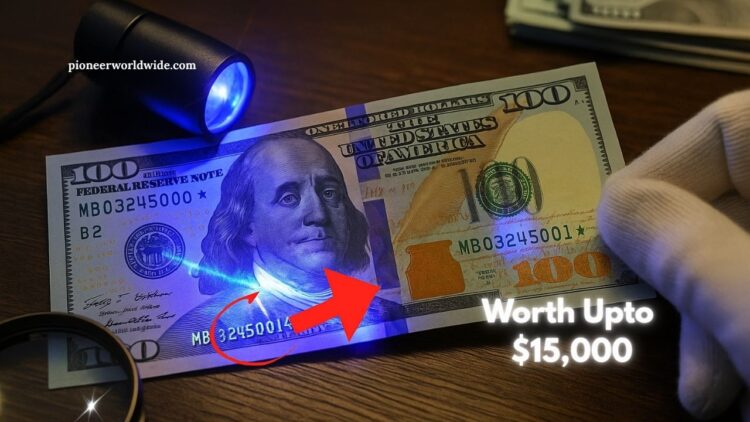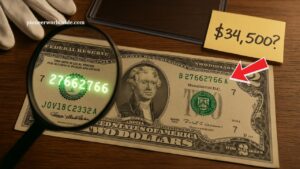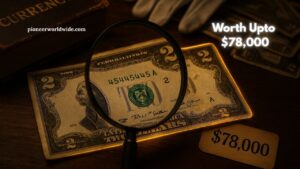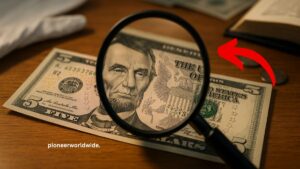If you’ve got a 2013 $100 bill in your wallet or piggy bank, don’t spend it just yet. What looks like a regular note could be a rare collectible worth far more than its $100 face value. Here’s how to spot valuable ones, understand their rarity, and know what factors drive up their value.
Why Some 2013 $100 Bills Are Valuable
With the 2013 redesign, the $100 bill introduced advanced security features—including the 3-D blue ribbon, color-shifting ink, and a large gold “100.” While these aim to deter counterfeiters, they also introduced rare printing anomalies and serial number quirks that collectors covet.
The most valuable varieties include:
- Star Notes – Replacement bills indicated by a star (*) at the end of the serial number.
- Duplicated serials – Serial numbers mistakenly printed twice on different notes.
- Fancy or patterned serial numbers – Palindromes, ladders, repeaters, or “solid” numbers (e.g., BBBBBBBB).
Collectors look for uncirculated condition, sharp printing quality, and low or memorable serial numbers.
Spotting the Rare 2013 $100 Bills
Check your bill for these key features:
| Feature | What to Look For | Why It Matters |
|---|---|---|
| A star (*) at end | Example: B22979828* | Indicates a rare replacement note — often more valuable |
| Duplicated serial ranges | B00000001 – B00250000, B03200001 – B09600000 | Known faulty prints that collectors track |
| Fancy serials | Palindromes 12344321, ladders 12345678, repeaters 11221122 | Unique and highly sought-after |
| Uncirculated quality | Crisp paper, unseen folds | Condition dramatically affects market value |
If your bill fits one or more of these, it’s time to have it evaluated by a coin and currency specialist.
How Much Can It Be Worth?
Potential values vary widely depending on rarity, condition, and demand. Here’s a snapshot:
- Star notes: $200–$400 (circulated), $500+ (uncirculated)
- Duplicated serials: Hundreds to thousands for matching pairs
- Fancy serials:
- Palindromes, ladders, solid numbers: hundreds to thousands
- Serial 00000001 on 2013 notes: reported at ~$15,600!
- Condition is key: crisp, well-preserved notes always fetch more
Even a single well‑conditioned star note may sell for $250+, while extreme rarities can approach five figures.
What to Do If You Find One
- Verify features — look for a star, unique serials, and immaculate condition
- Protect the note — store it in a sleeve to prevent damage
- Seek expert grading — companies like PMG or PCGS provide authentication and condition grades
- Sell via reputable channels — specialized currency dealers, auction houses, or online forums
Fancy Serial Examples
| Pattern | Example Serial | Estimated Value |
|---|---|---|
| Palindrome | 12344321 | $500–$1,500 |
| Ladder | 12345678 | $1,000–$4,500 |
| Solid | 77777777 | $2,000+ |
| Star note (low) | B00000005* | $300–$700 |
| 00000001 serial | A00000001A | $10,000–$20,000+ |
If you’ve got a 2013 $100 bill with a star note, rare serial pattern, or in uncirculated condition, it could be worth far more than you think.
These variations have been selling for hundreds, even thousands, and in rare cases, tens of thousands of dollars. Take a closer look—your bill could just be a hidden treasure.
FAQs
What’s a star note and why is it special?
A star note replaces a misprinted bill and is marked with a star (*) at the end of its serial number. They’re produced in limited number, making them more collectible.
Can any fancy serial increase value?
Yes! Palindromes, ladders, repeaters, and solid numbers are popular, especially in pristine condition. Their uniqueness drives up demand.
How do I sell a rare bill?
Have it graded by experts (PMG/PCGS) for authentication, then sell through trusted platforms—currency dealers, auction houses, or collector forums.




